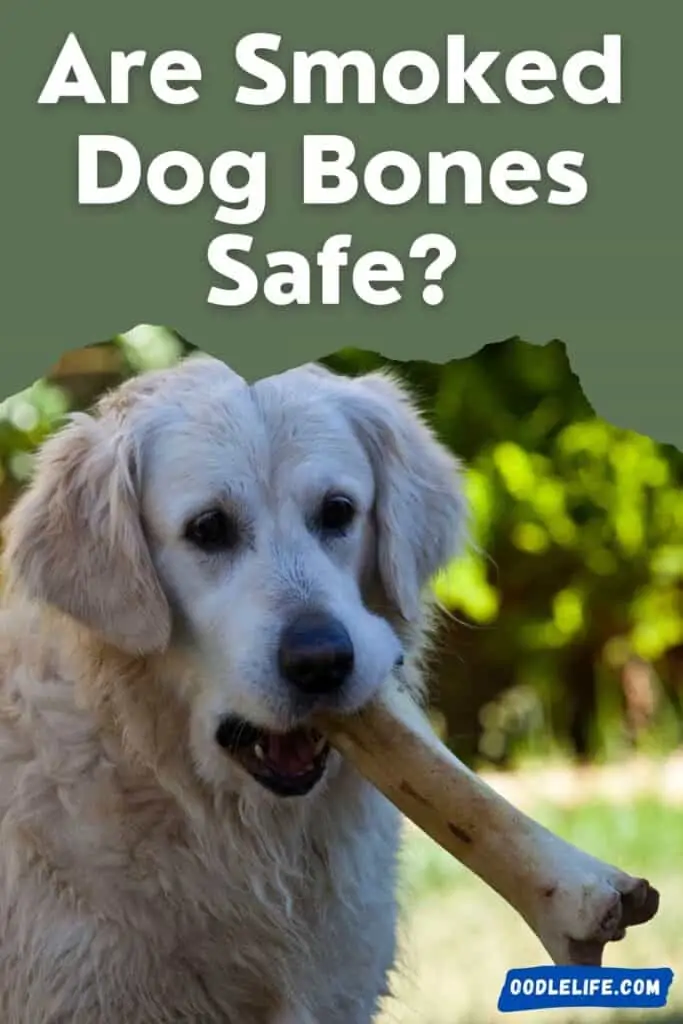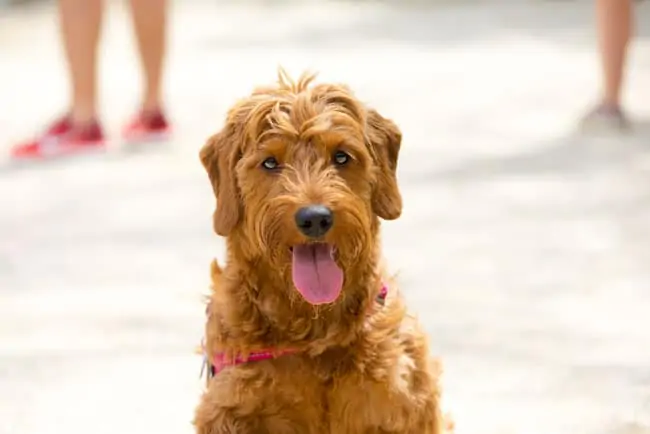Are Smoked Dog Bones Safe? (DIY and How to Make)
Being a dog owner can be one of the most rewarding experiences in a person’s life, but making sure the dog is getting a balanced, heathy diet can certainly be one of the more challenging parts of the journey. The good news is that there are a ton of options to choose from, one of the most popular choices on the market are smoked bones.

Smoked dog bones are a go-to option for a lot of dog owners due to the positive effects they can have on a dog’s nutrition, and overall health. However, there are certainly some important factors to consider before purchasing or making a bone treat, which we will be sure to go over in the following few sections.
Can dogs eat smoked bones?

The important thing to note here is that while yes dogs can eat smoked bones, there are a multitude of potential hazards you should consider beforehand. First of all, the overall safety of the bone will depend heavily on how exactly it was prepared, and how brittle the bone is.
Many smoked bones are often made with smaller pieces, cooked bones (instead of smoked) or chicken bones, these all should be avoided when looking to purchase a safe smoked bone.
The reason for this is because with all of these options, they provide a very delicate, and brittle bone, creating a greater risk that the pieces of the bone will break apart (rather than break down), potentially creating a choking hazard. A cooked bone often means danger.
Aside from how the bone is made, it is also important to understand whether or not your dog has any underlying health conditions which could affect how they may react to certain bones. Even if your dog has an upset stomach, it may be best to wait until your dog feels better, so that they can properly digest the food.
No matter your situation, it is paramount that you understand that your dog will have to be monitored.
Understand also that your decision is ultimately a personal choice, you may have specific beliefs, behaviours, or advice from a professional (Vet), but it is essential that you do what you think will make your dog happy, and healthy!
Are smoked bones GOOD for your dogs? Why give a dog a bone?

Smoked bones can be GREAT for your dog, as long as you take the proper precautions. As previously stated, many other alternatives do not provide the same amount of nutrients that smoked bones are able to provide.
On top of that, smoked bones are also important because they provide an amazing source of significant minerals like phosphorous, and calcium. However, potentially the biggest benefit to feeding your dog smoked bones, is that bones in general help to keep a dog’s mouth healthy.
Smoked bones are a great way to help break down tartar build up, reducing the risk of gum disease, and stimulating saliva production which increases the overall health of your furry friend’s mouth, and teeth.
A lot of people ask; what’s the point in giving a dog a bone? Well aside from the plethora of health benefits mentioned above, there is also a social aspect to it. By giving your dog a bone, not only are you offering it all of the healthy nutrients necessary for a dog’s development, but you are also giving them a treat that can occupy it’s time for hours.
This can help to reduce your dog’s separation anxiety if you notice this to be an issue when you are not around, as it helps them stay preoccupied when you’re out of the house. It is an amazingly cost-effective option to help distract your furry friend, and provide tremendous health benefits for them at the same time.
What are the dangers of eating bones in general?

The dangers of eating bones in general comes from how the bone was made, and with what material. With that being said, there are some general safety concerns for giving bones to dogs.
To begin, the majority of bones on the market are very hard, or at least hard enough to potentially cause your dog’s teeth to crack. This is something very serious as it may eventually lead to root canals, tooth extractions, or a plethora of other issues.
Also, bones when broken down, can create sharp edges which could cut your dog’s gums, tongue, and other oral mucous membranes. This can create severe pain for the dog, and it is often a pretty messy situation to have to clean up, as bones are known to get stuck in the mouth (specifically the molars of the lower jaw).
Sometimes dogs get so caught up in the excitement of the moment, that they aren’t even really aware of the treat that their inhaling.
This can become especially problematic with dog bones, as I’m sure you can imagine, all (or part) of the bone can slide down the throat, and become stuck, blocking the dog’s airway, eventually creating a potential choking hazard.
Furthermore, bones can create gastrointestinal complications as they pass through the digestive tract. During this process, there is a serious chance that a piece of bone can become lodged in the esophagus, stomach, or intestines (generally requiring surgery to remove). Even less severe circumstances could occur such as vomiting, diarrhea, or constipation, all of which I’m sure you’d like to avoid.
What bones CAN’T dogs eat?
Though there are many bones that are absolutely fine for any dog to eat, there are certain bones which are less healthy, and can provide more risk if you were to feed it to your dog. Some of the most popular bones which dogs absolutely CAN’T eat include:

Small bones – Smaller bones (generally) provide a much higher risk for dogs, as they are more likely to get lodged in the dog’s esophagus or other vital organs. It can also scratch, and damage the dog’s mouth, teeth, and other parts of the digestive tract. So smaller rib bones are a no go.
Cooked bones – Cooked bone provide very serious risks, as they can break down easily, and splinter the dogs mouth, or internal organs. This could result in serious issues like: broken teeth on the chew, mouth/tongue injuries, bones looped around lower jaw, windpipe/esophagus/gastrointestinal blockage, constipation, rectal bleeding, and bacterial infections.
Chicken bones – The reason why a chicken bone is NOT ok to give to your dog, is because they are especially brittle, and could break, and splinter. Even more so when they’re cooked, chicken bone is easy to break that it could cause your dog to choke, or worse, cause damage (and potential infection) to their gastrointestinal tract.
Turkey bones – Similar to chicken bones, turkey bones are also very brittle, and should be avoided for comparable reasons.
Pork bones – Pork bones also fall into this category, as (much like the previous two bones) they can break down fairly easily. This includes pork ribs, ham bones, and pork chop bones, essentially all pork bones are widely believed to be unsafe (whether cooked or raw). Can dogs eat pork? The full facts.
Simple recipe for smoking dog bones DIY
So, I’m sure at this point you are wondering, “can I smoke my own bones at home?”. Well, the short answer to this is YES! We have gathered some simple steps to follow for smoking your own dog bones, and listed them below.
Step 1. GET THE TOOLS – There are a variety of devices you can use for the process, however the most common tools that are required is an electric smoker, cherry wood chips, and a digital thermometer.
Step 2. GET THE BONES – This part is pretty simple, just go to your local butcher and ask for a raw bone (you should be looking for a raw bone or marrow bone that is safe for your dog like beef).
Step 3. PREPARE THE BONES – Before you move on to smoking the bone, many recipes say to let the bone thaw overnight before placing it in the smoker. Or if they were put in a fridge, than let them sit out for an hour or two to bring it to room temperature. Other than that there really isn’t too much that you need to prep for, all of the flavour comes from the smoke, gristle, and marrow.
Step 4. PREPARE THE SMOKER – You begin by soaking your chips in water for at least 30 minutes before placing them in the smoker. Some smokers will have a water/drip pan, look to fill it about half-way with water before placing in the smoker. Next, you should set your smoker temperature (smoke low and slow at 225 degrees Fahrenheit), close the door, and let your smoker get to your cooking temperature.
Step 5. ADD BONES – Next you should look to add your bones into the smoker, and set the temperature to 145-150 degrees Fahrenheit for beef bones, and 165 degrees Fahrenheit for pork bones. You are able to cook these bones at the same time (or even human food) if you have ample space, just understand where you are placing it in the smoker, and which bones/food needs more (or less) heat.
Step 6. ADD WOOD CHIPS – Next you pull the wood chip feeder out from the side of the smoker. Grab a handful of chips from the soaking pan, squeeze excess water from them, and add the chips to the feeder. Insert chip feeder into smoker, and turn to empty chips into the chip pan.
Following this check to make sure that your smoke vent is completely OPEN! And finally, now all you have to do is wait! After 1 hour, come back to the smoker, repeat procedure to add one more handful of wood chips to the feeder, and return to relaxation. After the first 2 hours of using the wood chips to cook the bones, and the rest of the process is done through slow cooking.
STEP 7. CHECK TEMPERATURE – First understand that time is only a guide line, and the time will differ depending on the smoker you use, where it’s placed In the smoker etc. When using a digital thermometer, check the temperature of the marrow inside the bone. If the center marrow is at 160 degrees Fahrenheit or higher, they are done!
STEP 8. LET BONES COOL – Pull the smoked dog bones out and let them sit and cool for a couple of hours.
BON APPETITE! – At this point the bones should be cooled, and ready to serve!
CONCLUSION
All in all, not only is it “ok” for you to feed your dog smoked bones, but there are actually tremendous health, and social benefits to be gained from doing so.
The are alternative dog chews if you want do avoid animal bone and the risk of bone fragments. Dog bone treats from companies are safe – so are Vet, Pet store and many butcher bought chewing bones. A chew toy or rawhide chews are alterantives. Natural bones do have some unique benefits – but your dog is fine without them.
While it is popular to provide your dog with some sort of bone, it’s essential that you understand that there are some bones that are better than others, and there are some dogs who are going to react better than others as well.
It’s very important you understand your dogs specific dietary needs, preferences, and/or advice given from a professional. But as long as you keep these important things in mind, and are aware of not only the health benefits, but the potential health risks as well. I have full confidence that you will find a safe, and nutritious option for your furry friend!